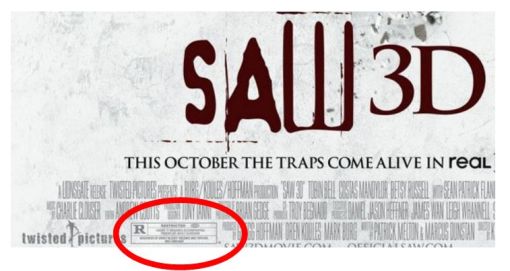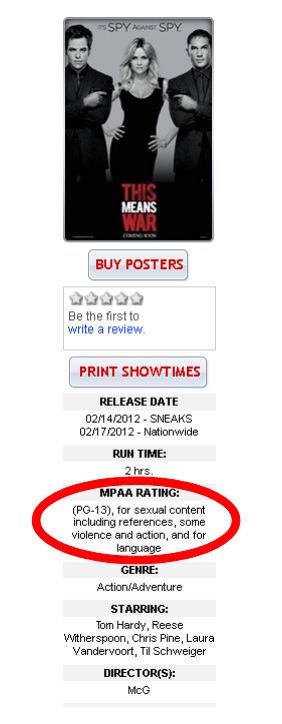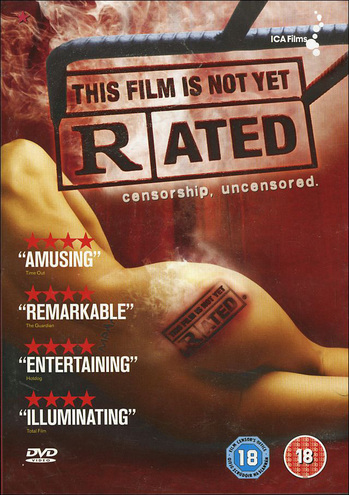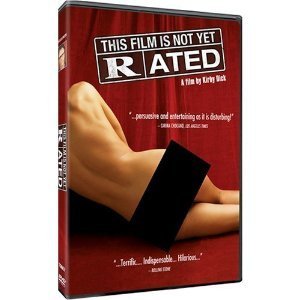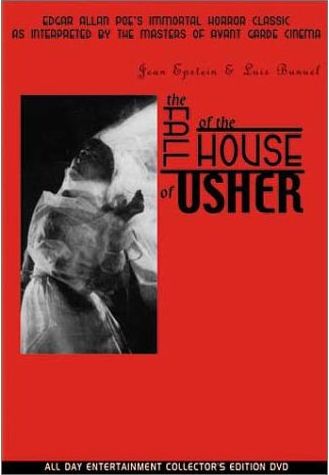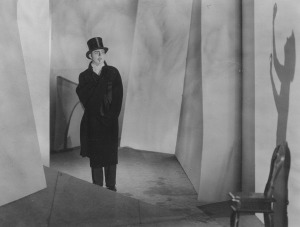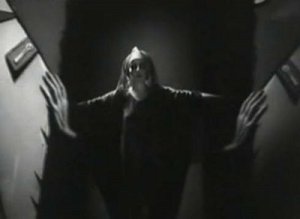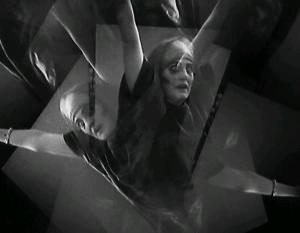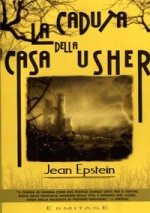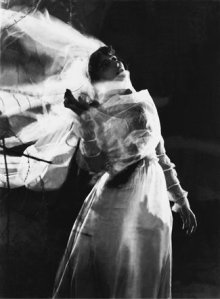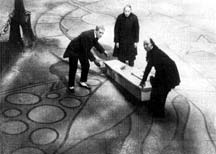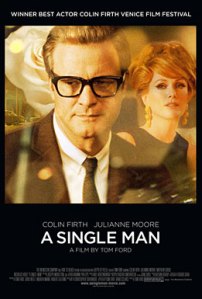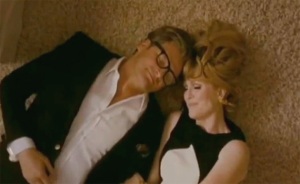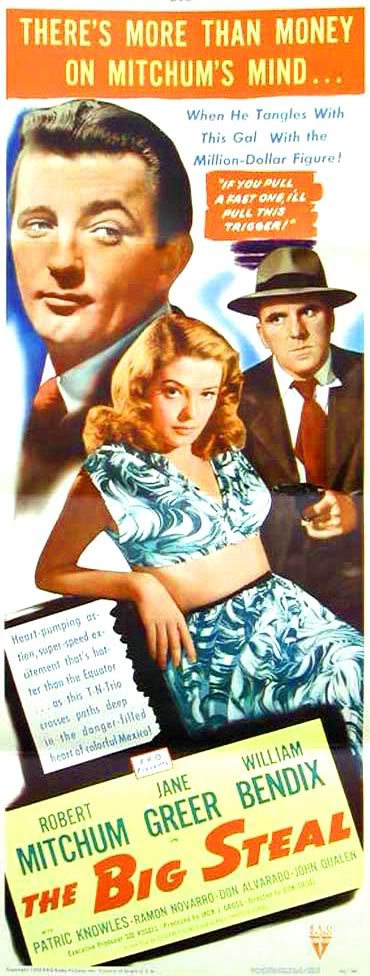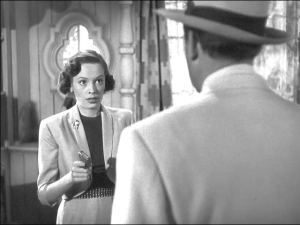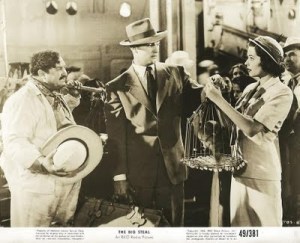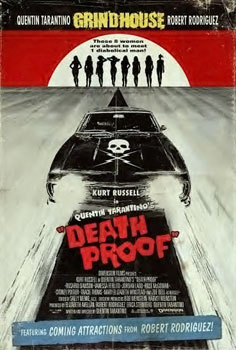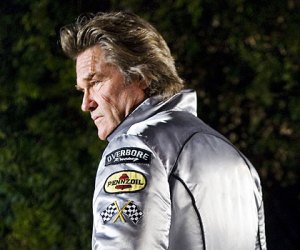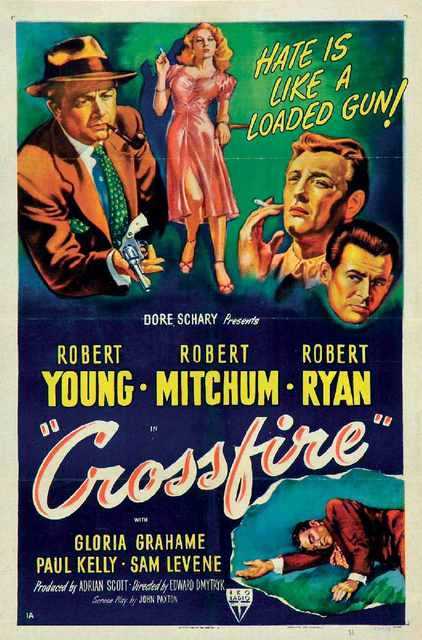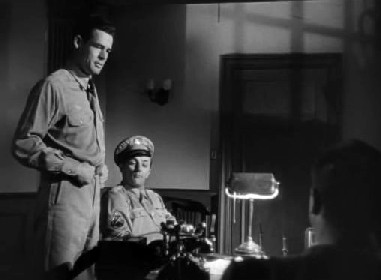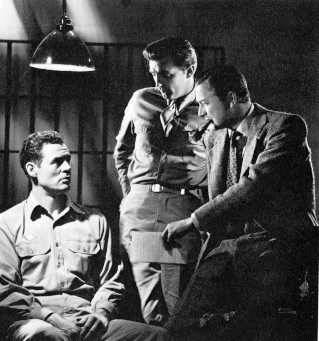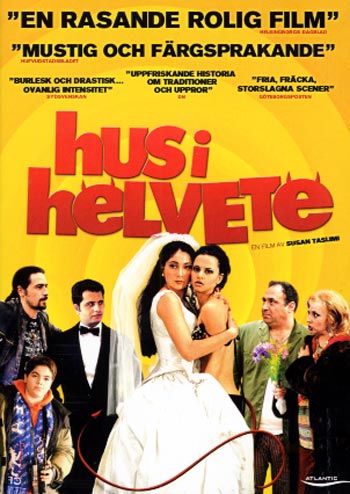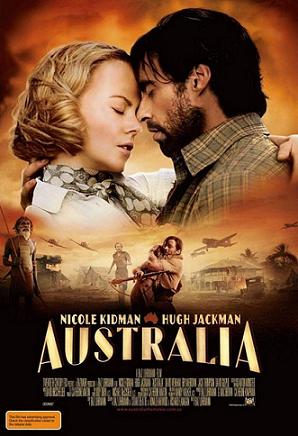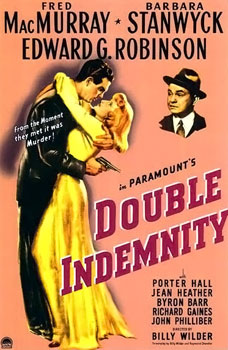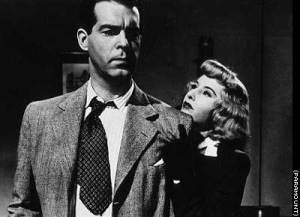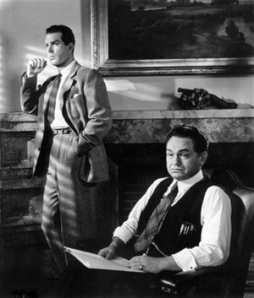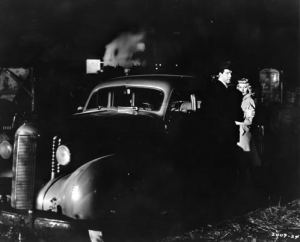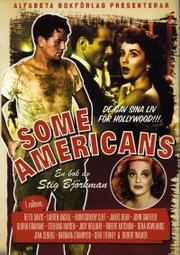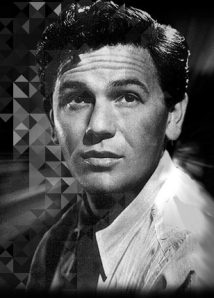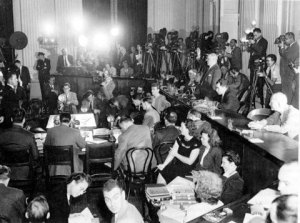This is a documentary film about MPAA’s ratings of movies, and discusses whether this is institutionalized censorship of movies or not.
MPAA ratings today
In the US, MPAA ratings of movies is well-known. These ratings are said to be recommendations about what audience groups a movie is suitable for. The ratings are according to a five level hierarchy:
- G: “General Audiences” – All ages admitted
- PG: “Parental Guidance Suggested” – Some material may not be suitable for children
- PG-13: “Parents Strongly Cautioned” – Some material may be inappropriate for children under 13
- R: “Restricted” – Under 17 not admitted without parent or adult guardian
- NC-17: “No One 17 and Under Admitted”
Looking at the names of these levels, we see that the first three (G, PG, PG-13) are suggestive, in that they seem to give advice, while the last two (R, NC-17) express categorical prohibitions.
These ratings are part of the public image created by producers, distributors, and exhibitors. That is, in marketing of movies, you see these ratings clearly announced.
The images below show a part of the “Saw 3D” movie poster, and how “This Means War” is presented at movietickets.com:
On the movie poster, the rating (“R”) is highly visible compared to all other credits in this text-dense part of the poster. Hence, glancing at the poster is likely to inform you about its MPAA rating.
The column describing “This Means War” has the MPAA rating as third item from the top, preceding “genre”, “starring”, “director”, etc.
These two random examples indicate that MPAA rating is definitely an important part of the US world of movie business and pleasure.
The objective of the documentary
The film “This film is not yet rated” aims to investigate what these ratings mean, how ratings are decided, and what effects ratings can have on the movie industry.
Within the movie industry, the concept of MPAA ratings is well-known, as well as the importance of getting the most desirable rating of the movie you want to market. But the way ratings are set sometimes surprise persons with a good overview over the spectrum of movies produced during a decade or so. If you, as a movie producer, want to get a specific rating, what in the movie can get it that rating? Or what in the movie would prevent it from getting that rating? The process of deciding upon MPAA ratings is not transparent, and much confusion exists about the processes, preferences and priorities of the MPAA rating system. One could compare it to Kremlinology during the period of the Soviet Union, where important decisions were made behind closed doors, and where the effects of decisions could have major impact on the rest of the world.
This documentary aims to uncover what the MPAA rating is in practice, what it is officially stated to be, and whether it is appropriate to have these kinds of institutions in a well-balanced democratic society.
More on MPAA and control of movies in the US
MPAA (Motion Picture Association of America) is an American industry association, basically a cooperation platform for the biggest Hollywood studios. Currently the following studios support MPAA:
- Walt Disney Studios Motion Pictures
- Paramount Pictures Corporation
- Sony Pictures Entertainment, Inc.
- Twentieth Century Fox Film Corporation
- Universal City Studios LLC
- Warner Bros. Entertainment Inc.
It has broadened its scope to cover not only the movie sector, but also television and home video. This change corresponds well to the evolution of the Hollywood studios that survived., they had to include other channels and reaching other audiences.
In 1922 the Motion Picture Producers and Distributors of America (MPPDA) was created as a signal that the movie industry was embarking on what could be called social responsibility. One reason was the 1921 Fatty Arbuckle scandal , which raised a national uproar about “immoral behavior” of individual persons in Hollywood, and also cast doubts about the role of the movie industry as such. The first president of MPPDA was Will H. Hays, and his role was to defend the industry against attacks from many US organizations, mainly on religious and moral grounds. To avoid boycott at the movies, which could hit the studios hard, MPPDA embarked on campaigns to eliminate criticism.
At the end of the 1920s, there were some real threats that there might be federal legislation that could control what studios could do, and to avoid this, the MPDDA created the Motion Picture Production Code (commonly known as the “Hays Code”). This Code, accepted and supported by the major studios in 1930, was a set of detailed rules about what movies could show and what they must not show, ranging from bans of showing “suggestive dances” and homosexuality, to upholding the sanctity of marriage. During the first years of its existence, the Code was officially supported, but in practice, it did not constrain too severely the movies made by the studios. One could say that during this period it was intended to serves a real self-regulation within the studios. But studios were mainly interested in profits, and saw what created success at the box office, so the Code had not much effect.
As criticism of Hollywood started to rise again, a change was instituted in 1934, with an industry agreement that all movies produced in the US, intended for public display, must obtain a certificate about adherence to a modified set of rules about acceptable movies. In effect, this was largely a framework for censorship. Even though there was no federal legislation that could ban movies from public display, as distributors in general also supported the Code, movies without a certificate were in practice not shown.
In 1946, the name of MPDA was changed to Motion Picture Association of America (MPAA).
This system of self-regulation was alive and well until the beginnings of the 1950s. At that time, there were court decisions that eroded the application of the Code, as well as protests from within the movie industry itself.
This escalated during the years, and in the 1960s everybody understood that the old Code was impossible to uphold. In 1968, MPAA (now with Jack Valenti as president) created the voluntary rating system, which replaced detailed rules about what movies can and cannot show, with a rating indicating suitable audience categories.
The system was voluntary, which means that there is no formal objection to producing, distributing , and showing whatever movie you want. Instead the ratings should serve as advice to potential audiences, with special emphasis on advice about what children and teenagers could and should not watch.
That the MPAA rating system was a voluntary system sounds fine. But formal freedom does not entail practical freedom. The rating system is controlled by three parties: MPAA, the National Association of Theater Owners (NATO), and the International Film Importers & Distributors of America (IFIDA). This is a significant fact, as NATO and IFIDA largely influence the distribution and display of movies. That is, if a movie does not get rated, then the effect can be that no distributor of theater owner wants to touch the movie — which means it can be commercially dead. There is also another aspect where the existence of rating has a monumental effect on commercial success. Marketing is based on advertising, and movies that do not get page space of air time for their advertisements will not be known to any sizable part of the candidate audiences. And if a film is not rated, media can refuse to provide advertisement space and time.
In this way, the rating system can effectively be a censorship system.
And this is the major issue that the documentary “This film is not yet rated” addresses.
What is achieved by this film?
The documentary has been directed by Kirby Dick. He has been making documentaries since the 1980s, which explains the smooth flow in this film.
The production of this film has been done by Independent Film Channel (IFC), in association with NetFlix, British Broadcasting Corporation (BBC), Chain Camera Pictures, and Red Envelope Entertainment.
Themes that appear are: a short (fragmented) history of the Hays Code and the MPAA ratings; “deviant” movies made before institutionalized control of movies; types of objectionable themes and depictions; examples of surprising differences in ratings for what looks like very similar movie scenes; process of rating; who is on the MPAA rating board; how rating decisions can be appealed.
To put some meat on the topic, there are numerous short clips from movies — preceding the Hays Code, during the reign of the Code, and during the reign of MPAA ratings — that illustrate what can and what cannot be shown. Much nudity, of course. But as all such clips from other movies are quite short, they do not convey a real sense of the context for the chosen seconds of play time to display. So no need to get sexually aroused by this. It is mainly a potpourri of glimpses of what has at one time or another been accepted or condemned by MPDDA and MPAA.
By presenting some clips side by side, we can see how seemingly similar scenes different are rated quite differently. The implication presented is that the ratings actually prefer traditional, straight, non-adventurous sex in scenes, while having negative feelings when sexual roles are reversed, when there is potential homosexuality involved, when women are taking initiatives, when some deeper pleasure is expressed, etc.
Another theme is how strong violence can be accepted, but even moderate discrete sex is not accepted. This can be compared to modern European judgment (formal censorship, ratings, or informal judgments) on movies, where violence is regarded as more dangerous than sex.
One major thread in the documentary is the search for the identities of the rating board members. MPAA, who provides the organizational platform for the rating board, has covered the board in a veil of secrecy. No-one outside the MPAA should know who is on the board. And this is what Dick (and others) find unnatural. In a democracy, when some group makes decisions that can have a dramatic influence on the success of your work, should that group be anonymous? How can we feel assured that the group is really acting in the interest of all? Therefore, Dick, with the help of a private investigator, tries to track down the members. This thread of the story is like a detective story, where hidden cameras and binoculars are used, calling MPAA using fake identities, following cars to restaurants, etc. Dick does manage to find out the identities of the board.
A second question is whether these members are representatives of the categories of citizens that they purport to represent. As mentioned earlier, the rating system is mainly targeting parents, giving them advice on whether they should or should not let their children watch some movie. MPAA states that the board is composed of “average parents” with children of age 5-17.
As Joan Graves (MPAA Ratings Chief) says:
The ratings system exists for one purpose: to inform parents about the content of films. Our ratings reflect how we believe a majority of American parents, not just from large cities on the coasts but everywhere in between, would rate a film. It’s a responsibility we take very seriously.
When we assign ratings to films, we do not make qualitative judgments; we are not film critics or censors. We are parents who ask ourselves the same important question during every screening: What would I want to know about this film before I allow my child to see it? The board makes ratings decisions based on the film in its entirety, not by comparison to other films.
MPAA Ratings Chief Defends Movie Ratings (The Hollywood Reporter, Feb 23, 2011)
What Dick wants to investigate is whether the board members match the demographic profile as stated by MPAA: “parents of children between the ages of 5 and 17”. Now, having names on the board members, Dick gets information about the family situations of these members. And the result is that some, but not all, have children in that age span. Hence, MPAA is lying when it says we should be assured that the board is populated by parents who should “eat their own dog food”.
To further test what the rating process entails, Dick submits an early version of this documentary to get a rating. As it is crammed with sexually explicit material, it gets an NC-17 rating. Just to test the system, Dick makes a formal appeal to the MPAA ratings appeal board. This boards is also secret, and it was difficult to get any sensible answers to questions posed to MPAA. By some undercover work, most of the members of that board were discovered, and it turned out that they are representatives of industry — movie production, distribution, theaters. And they decided not to reverse the rating board’s decision. Case closed.
The documentary contains quite a lot of statements from persons on the fringe or outside the established movie industry. Of these, perhaps John Waters is the most well-known. We do get from these persons some refreshing statements about what movies can achieve if permitted some freedom, but also how the rating system introduced practical barriers to distribution and display of independently made movies.
What is missing?
OK, this movie wants to get some wider distribution, so it aims to position itself as an easy and entertaining story, not requiring much effort or stamina from the audience. Television documentaries — the main channel for these kinds of works — need to take it easy in their storytelling. We see this here, in that quite a large part of this film concerns the investigation trying to uncover the names of the rating board members. So we get to see how a certain kind of investigative journalism can be done. And this is more attractive for screen audiences, compared to digging into libraries and archives looking for information. But “the chase” we see was not needed to be part of the film, It would have been enough to tell us the end results: “the board members are …”.
A more annoying aspect is that the MPAA’s role is not more clearly described. It is actually doing much more that movie rating. All matters of common interest to the movie industry can be handled by MPAA. The three main headings offered by MPAA at their home page are:
- Film Ratings
- Content Protection
- Policy & Research
Actually, during last decades we have heard more about the MPAA campaigns against media piracy, than about movie ratings. Jack Valenti was for a long time a feared and hated opponent in the debates on copyright enforcement, and how he wanted to to introduce restrictions onto the Internet, to make sure that movies could only be accessed in acceptable ways.
If Dick had spent a little bit more time on clarifying that industry is using MPAA to control market and media, and what critical industry needs are, and how the MPAA acts in the interests of its supporting industry. Then the framework for MPAA rating can be better understood – and actually rational from the studios’ point of view – than what we get in this film: the rating process is a mystery.
Nevertheless, it is informative and entertaining to watch this documentary. It sheds some light on those rating acronyms that moviegoers see all over the US.
Conclusion
Entertaining, but not an in-depth study of the major forces that control the whys and whats and hows of the MPAA. The opinions expressed by the many movie people appearing here is enlightening, but other perspectives (e.g. from the studios) are missing. And too much time is spent on chasing the board members of the MPAA rating board. But probably this is one of the few practical ways of getting information about the MPAA rating system, unless you want to dive into some volumes of academic analysis of movie production.
Data
“This Film Is Not Yet Rated” (2006). Directed by: Kirby Dick. Written by: Kirby Dick, Eddie Schmidt, Matt Patterson. Starring: Kirby Dick, Cheryl Howell, John Waters, Maria Bello, Atom Egoyan, etc. Running time: 1:37:51 (Movie at IMDB)
